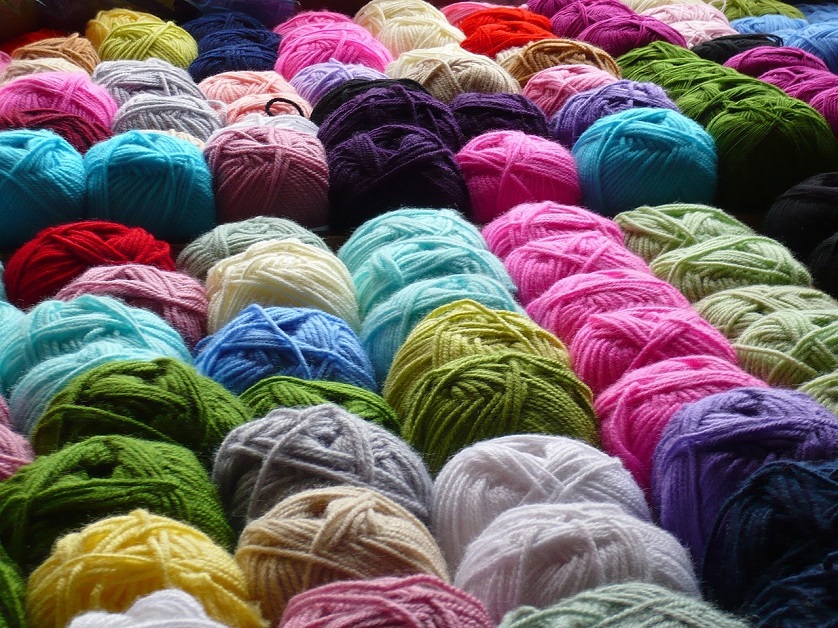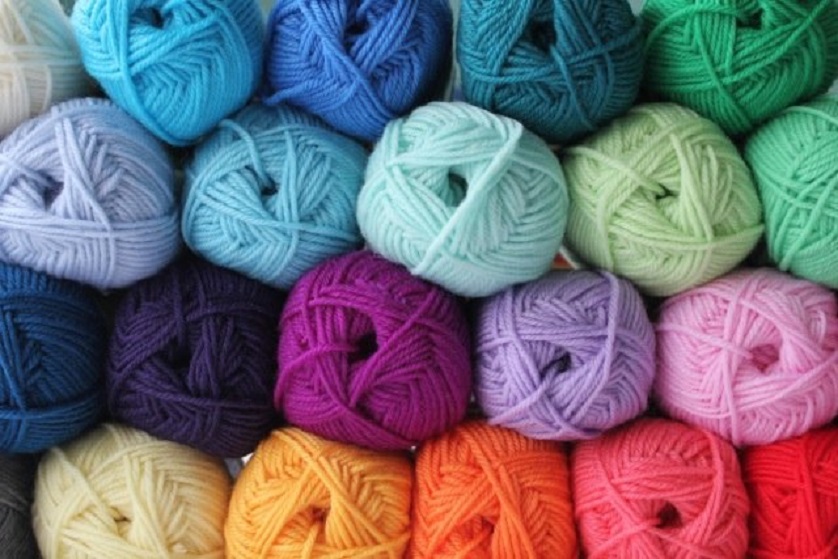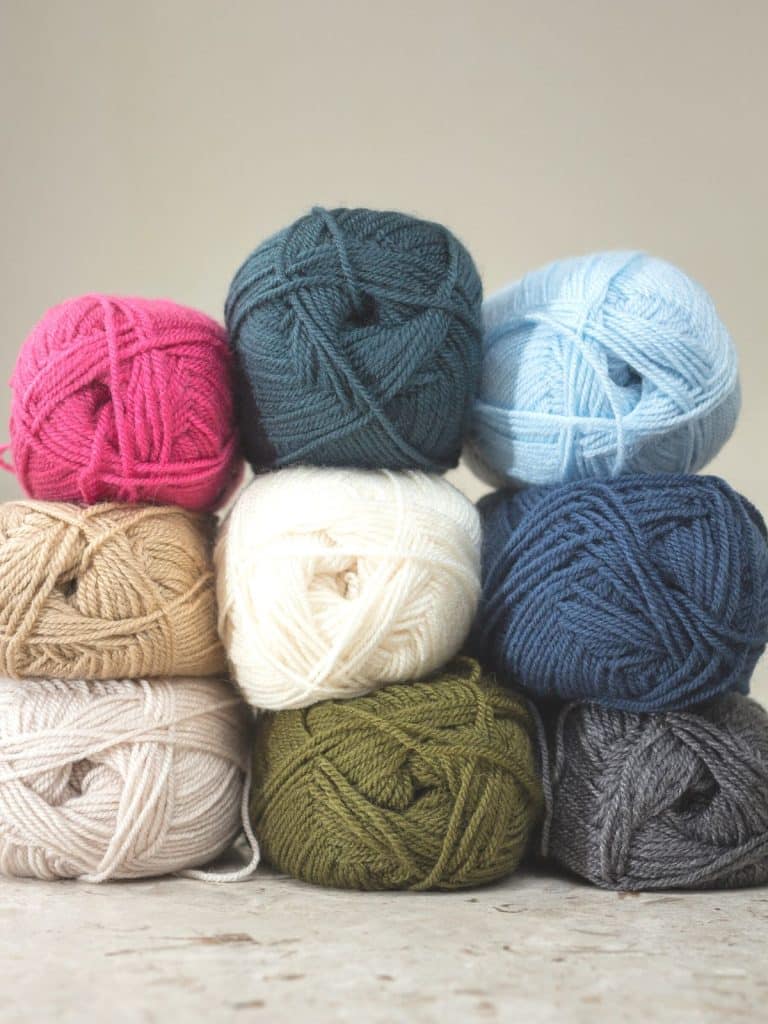Different Types Of Wool For Knitting
Different Types Of Wool For Knitting - Web we may immediately think of sheep wool, but there are other types of wool that can be used for knitting, including alpaca yarn, cashmere yarn (from goats), pashmina yarn (from tibetan mountain goats), shahtoosh yarn (from tibetan antelopes), angora yarn (from angora rabbits), and mohair yarn (from angora goats). Generally, items of clothing that will keep you warm. Web there are four different types of wool yarn, and these consist of: Wool yarn is a natural fiber that comes from the fleece of sheep. Hill wool, including kerry hill and cheviot. It’s available in a range of colors. It’s a popular choice for winter garments and accessories because it’s an excellent insulator and can trap and retain heat. Common animal fibres used in yarns include: Web when it comes to knitting, you have to be selective about your yarn choices. Wool yarn is an animal fiber sold at moderate prices. Web finer types are used in fine tailoring, knitwear and hand knitting yarn, coarser wool is generally used in upholstery and tweeds. Wool yarn is also known as the “queen of yarns” and is a top choice for knitters. Web there are dozens of different yarns available, from common fibres like wool and cotton to exotics like yak or alpaca,. Web the different types of yarn material for crochet and knitting can be broken into: These fibres are usually based on either animal, plant or man made materials. Web variations & types of wool yarn. There are some downsides to wool, such as it can be incredibly itching and irritating. Cotton yarn is made from cotton fibers and is prized. Types of fine wool such as merino which yarn fibers are soft. We’ll also delve into the different textures and colors available, discussing their impact on the final appearance of your knit. Wool’s warmth is a praised characteristic by knitters. There are some downsides to wool, such as it can be incredibly itching and irritating. It can be tough selecting. Even if you're just talking about types of wool yarn, you'll find differences between breeds of sheep. Types of knitting yarn faqs. Web synthetic types of knitting wool. Wool yarn is derived from sheep. It’s available in a range of colors. Pure new wool, also known as virgin wool is one that has been manufactured directly from animal fleece. Knowing which type of yarn best suits your needs can help ensure the success of your knitting project. Web finer types are used in fine tailoring, knitwear and hand knitting yarn, coarser wool is generally used in upholstery and tweeds. These fibres. What's more, it will help you judge what kind of fabric your yarn will knit up into. Some people are allergic to wool and should not wear wool products. Wool yarn is also known as the “queen of yarns” and is a top choice for knitters. Each has their own unique characteristics and softness. Web the four different types of. It’s made using a mix of 50% merino wool, and the rest is acrylic which means any resulting garments can be used both in the winter and in the summer. Cotton yarn is made from cotton fibers and is prized for its softness, breathability, and absorbency. Obtained from sheep and certain other animals, it is one of the most durable. Each has their own unique characteristics and softness. Wool yarn is an animal fiber sold at moderate prices. Wool fleece comes from sheep so wool falls into the first category of animal fibers. Frequently asked questions about yarn. Wool yarn is also known as the “queen of yarns” and is a top choice for knitters. Web when it comes to knitting, you have to be selective about your yarn choices. Web there are four different types of wool yarn, and these consist of: Merino wool is valued for its smoothness and luxurious softness. Web yarn fibre dictionary. Wool yarn is derived from sheep. Hill wool, including kerry hill and cheviot. There are three most popular types of sheep’s wool: These interlocked fibers (referred to. Web there are four different types of wool yarn, and these consist of: There are four different options. Web variations & types of wool yarn. Garments that have been made from the wool may begin to pill. Web we may immediately think of sheep wool, but there are other types of wool that can be used for knitting, including alpaca yarn, cashmere yarn (from goats), pashmina yarn (from tibetan mountain goats), shahtoosh yarn (from tibetan antelopes), angora yarn (from angora rabbits), and mohair yarn (from angora goats). Some people are allergic to wool and should not wear wool products. This article will help you tell the difference between an animal, plant, and synthetic fibers. Common animal fibres used in yarns include: Web the four different types of wool yarn are: Web synthetic types of knitting wool. Generally, items of clothing that will keep you warm. Each has their own unique characteristics and softness. Wool yarn is derived from sheep’s wool and is known for its warmth, elasticity, and durability. There are four different options. How to choose the best types of knitting yarn. It’s made using a mix of 50% merino wool, and the rest is acrylic which means any resulting garments can be used both in the winter and in the summer. Knowing which type of yarn best suits your needs can help ensure the success of your knitting project. Obtained from sheep and certain other animals, it is one of the most durable fiber types.
A Comprehensive Guide to Knitting Yarn Types, Weights, and Buying Tips

Best Types of Knitting Yarn Grandma Knits

Yarn Types Explained A Guide To Different Fibers Yarn, Lace weight

Which Yarn to use for knitting or crochet? JoCreates

A Beginner's Guide to 6 Different Types of Yarn Biscotte Yarns

A Comprehensive Guide to Knitting Yarn Types, Weights, and Buying Tips

6 Types Of Yarn Every Knitter Should Know 19 Knitting Infographics 🧶

Yarn Types and Weights A Starting Guide trishagurumi

A Guide to Knitting Yarn Types, Weights, and How to Choose It

Different Types of Yarn Explained Easy Crochet Patterns
Wool’s Warmth Is A Praised Characteristic By Knitters.
Types Of Yarn For Crochet And Knitting.
We’re Here To Untangle The Knots For You.
Plant Fibres You Will Regularly See Used In Yarns Include:.
Related Post: